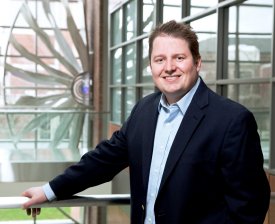May 25 2011
Anasys Instruments is pleased to announce that Dr William P King has been appointed as the Bliss Professor of Engineering at the University of Illinois at Urbana-Champaign. In addition to his faculty position at UIUC, Dr. King serves as a key scientific advisor to Anasys Instruments.
"Bill has accomplished a tremendous amount so early in his career," said Craig Prater, CTO of Anasys. "He has been a real pioneer in a nanoscale thermal processing and nanoscale thermal metrology. For his contributions and leadership, Bill has already been recognized by many academic and professional societies as well as multiple arms of the defense research community. We congratulate him on his latest well-deserved recognition."
 William P King, newly appointed Bliss Professor of Engineering at the University of Illinois.
William P King, newly appointed Bliss Professor of Engineering at the University of Illinois.
As a Willett Faculty Scholar and professor in the Department of Mechanical Science and Engineering, Professor King's research group works on nanoscale thermal and mechanical measurements, engineering of nanomechanical devices, and manufacturing, metrology, and energy transport at small scales. His group is particularly focused on nanoengineering for macroscopic systems.
One of the tools in Professor King's laboratory is a heatable silicon probe tip that is about 10 nm in size and is featured in Anasys' range of instrumentation, notably the NanoTA2 and nanoIR systems. This tip is the world's smallest heat source allowing local modification and patterning of nanometer-scale features directly onto a variety of surfaces. Because the probes can be heated and cooled more rapidly than traditional furnaces, they can produce nanostructures hundreds of times faster than traditional processing techniques. In a completely different application, the heated probes can be used to measure the transition temperature of materials with sub-100 nm resolution. This is a major improvement over previous commercially available tools that could only achieve resolution near 10 micrometers. The hundredfold resolution improvement makes this technique useful to researchers who are developing a range of new materials from pharmaceuticals to polymer composites.